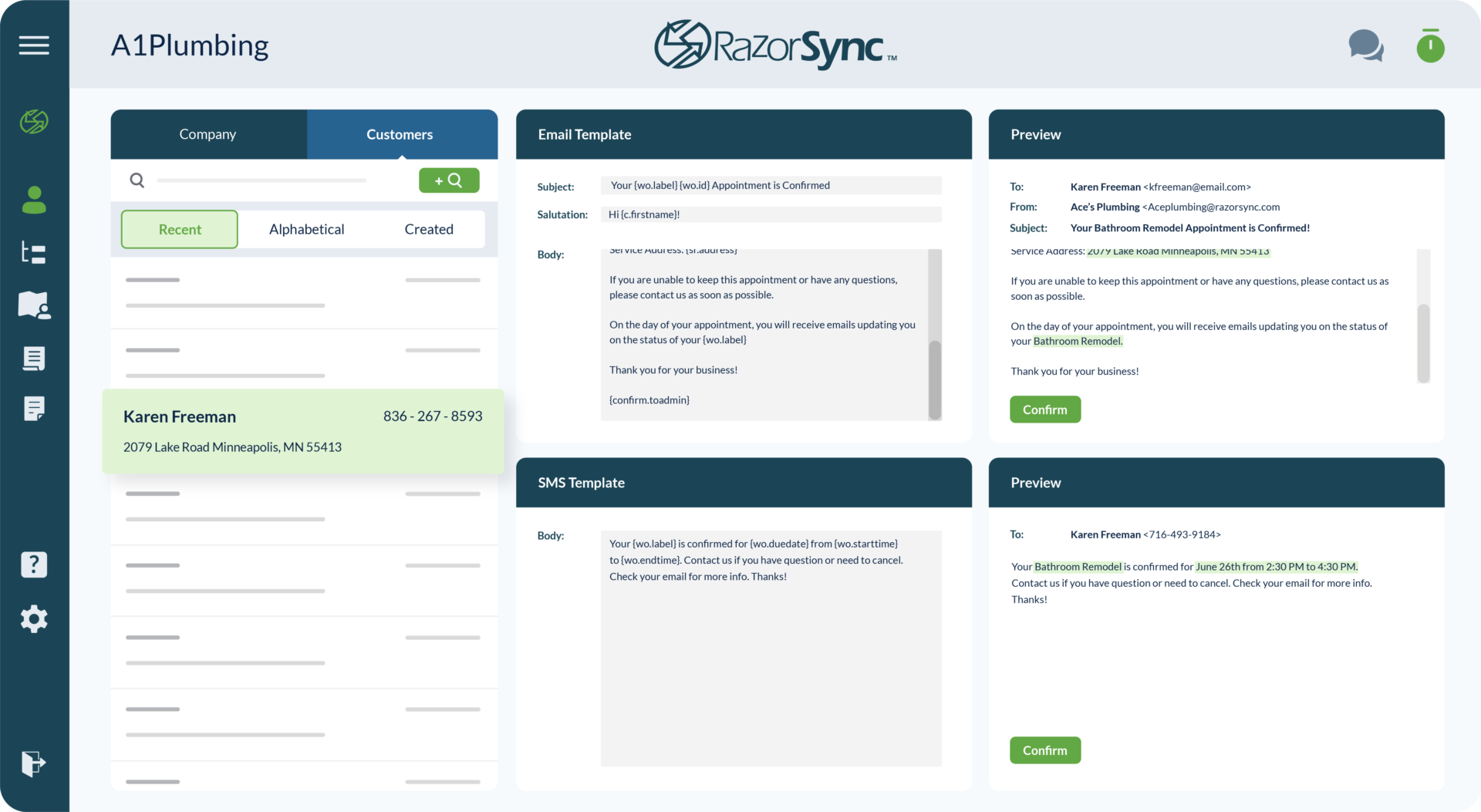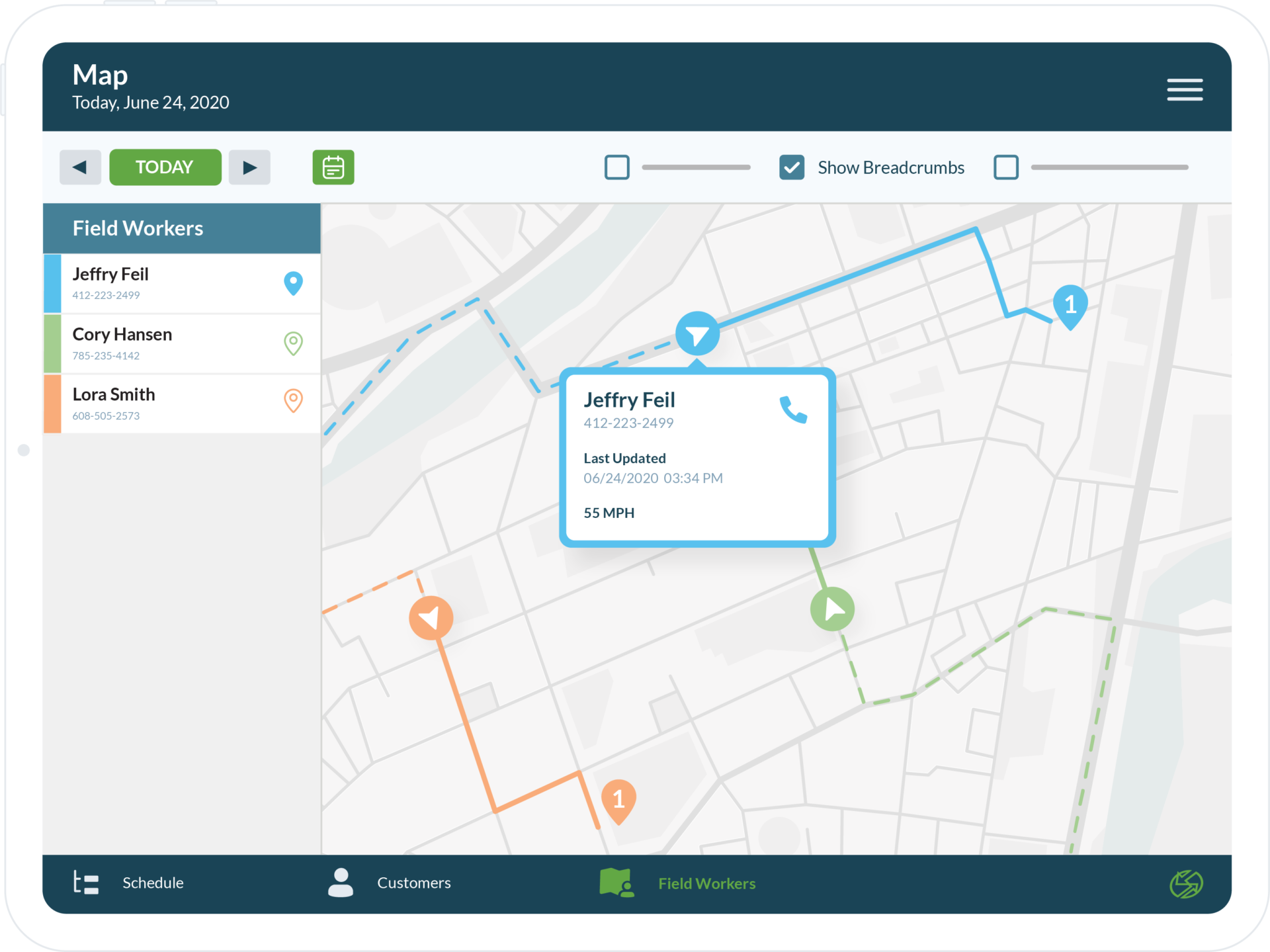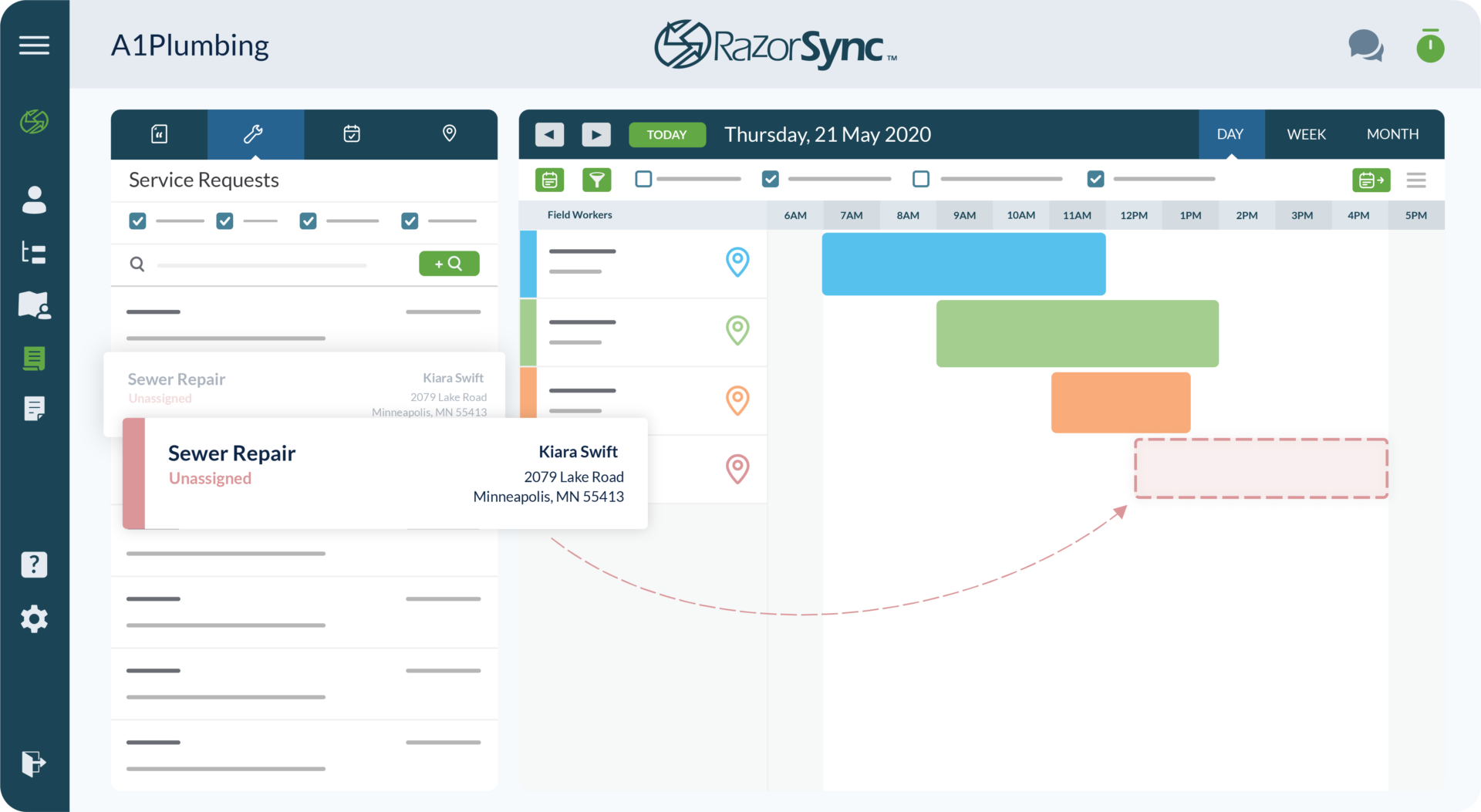Top Trends to Watch in 2025: Technology and Software for Field Services
Discover the top 2025 trends in technology and software for field services, including AI, mobile-first solutions, and cloud-based tools to transform your business.
Feb 03, 2025
# of Minutes to Read

The field service industry is evolving rapidly as businesses strive to meet the growing demands of customers while optimizing operational efficiency. In 2025, technology and software for field services will play a pivotal role in shaping the industry’s future. Staying ahead of technological trends is crucial for field service companies to remain competitive and deliver exceptional customer experiences.
Failing to adopt these trends could lead to missed opportunities, operational inefficiencies, and a declining customer base. Historically, field service management (FSM) software has progressed from basic scheduling tools to comprehensive platforms that integrate advanced technologies like artificial intelligence (AI), mobile solutions, and cloud-based capabilities. This evolution has significantly improved the way businesses manage their field operations.
Key Field Service Software and Technology Trends for 2025
As the field service industry evolves, several key technology and software trends are emerging to shape its future. These trends offer opportunities to enhance operational efficiency, improve customer satisfaction, and gain a competitive edge in the market.
Here are some trends to watch in 2025:
Trend #1: AI and Machine Learning Integration
AI and machine learning are transforming how field service businesses operate. Predictive analytics, powered by AI, enables proactive maintenance and repair by identifying potential issues before they become major problems. This reduces downtime and minimizes costly emergency repairs.
AI-enhanced dispatching and scheduling ensure that the right technician is assigned to the right job at the right time, optimizing resource utilization and reducing travel time. The benefits of these advancements include increased efficiency, reduced operational costs, and higher customer satisfaction.
- Predictive analytics: Proactively address maintenance and repair needs before major issues arise.
- AI-enhanced dispatching: Assign the right technician to the right job, optimizing resource use.
- Key benefits: Increased efficiency, reduced costs, and improved customer satisfaction.
Trend #2: Mobile-First Field Service Solutions
With the widespread adoption of smartphones and mobile devices, mobile-first solutions are becoming a cornerstone of field service management. Mobile applications empower technicians by providing real-time access to customer data, schedules, and service history, even when they are in remote locations.
Offline functionality ensures that technicians can complete tasks and update records without internet connectivity, boosting productivity and reducing delays. This trend aligns with the increasing demand for agility and responsiveness in the field service sector.
- Real-time access: Technicians can view customer data, schedules, and service history on the go.
- Offline functionality: Complete tasks even in areas with limited connectivity.
- Benefits: Boosts productivity and supports agile field service operations.
Trend #3: Cloud-Based FSM Software
Cloud-based FSM software is revolutionizing the way businesses manage their operations. Its scalability and flexibility make it ideal for both small and large organizations. Real-time collaboration and enhanced data security are key advantages of cloud solutions.
Cost-effective subscription models reduce IT overhead, allowing businesses to allocate resources more efficiently. As a result, cloud-based FSM software is becoming the go-to choice for companies seeking to streamline their operations.
- Scalability: Suitable for businesses of all sizes, from small startups to large enterprises.
- Enhanced collaboration: Real-time data sharing between teams and departments.
- Key advantages: Cost-effective subscription models and reduced IT overhead.
Trend #4: Augmented Reality (AR) and Virtual Reality (VR)

AR and VR are emerging as game-changing technologies in the field service industry. AR is being used for training and remote support, allowing technicians to visualize complex repairs and receive step-by-step guidance in real time.
VR-based simulations provide immersive training experiences, helping technicians develop the skills needed for complex troubleshooting. These technologies enhance productivity by reducing errors and improving technician confidence.
- AR for training: Provide step-by-step, visual guidance for complex repairs.
- VR simulations: Deliver immersive training for troubleshooting and repair scenarios.
- Benefits: Reduce errors, improve technician confidence, and enhance productivity.
Trend #5: Enhanced Customer Experience Tools
Customer experience is a critical factor in the success of field service businesses. Self-service portals and mobile apps enable customers to schedule appointments, track service progress, and provide feedback conveniently.
Real-time service tracking keeps customers informed, fostering trust and transparency. Personalized service offerings, driven by data insights, further enhance customer satisfaction and loyalty.
- Self-service portals: Empower customers to schedule appointments and track progress.
- Real-time tracking: Build trust through transparency and instant updates.
- Personalized offerings: Use data-driven insights to tailor services to customer needs.
Trend #6: Data-Driven Decision-Making
Data analytics is becoming indispensable for field service management. Analytics dashboards in FSM software provide actionable insights that help businesses allocate resources effectively and predict future trends.
Leveraging big data allows companies to identify inefficiencies, optimize operations, and drive business growth. The benefits of data-driven decision-making include improved performance, reduced costs, and enhanced customer satisfaction.
- Analytics dashboards: Provide actionable insights for better resource allocation.
- Big data analysis: Identify inefficiencies and optimize field service operations.
- Benefits: Drive growth, enhance customer satisfaction, and reduce costs.

Why These Trends Matter for Field Service Businesses
Adopting these trends provides field service businesses with a competitive edge by improving operational efficiency, reducing costs, and enhancing customer satisfaction. Staying ahead of technological advancements ensures long-term success and positions companies as industry leaders.
However, implementing these trends comes with challenges, such as the need for employee training and initial investment costs. Overcoming these hurdles is essential for unlocking the benefits of cutting-edge technology.
How RazorSync Supports These Trends
RazorSync’s field service software is designed to help businesses capitalize on these trends. Its AI-powered tools streamline scheduling and dispatching, while mobile applications provide technicians with real-time access to critical information. The platform’s cloud-based architecture ensures scalability and security.
Success stories from RazorSync users highlight the software’s impact on operational efficiency and customer satisfaction. As a leader in FSM software, RazorSync is committed to supporting businesses in navigating the evolving landscape of field service management.
“RazorSync has transformed the way we manage our operations, saving us time and improving our customer relationships.” – Satisfied Customer
Key Takeaways
The field service industry in 2025 will be defined by technological advancements and innovative software solutions. Businesses that embrace trends like AI, mobile-first solutions, cloud-based software, AR/VR, and data-driven decision-making will position themselves for success.
Don’t wait to adopt these innovations. Explore how RazorSync can help your business stay ahead of the curve and thrive in the ever-evolving field service industry. Contact us today for a free trial!










